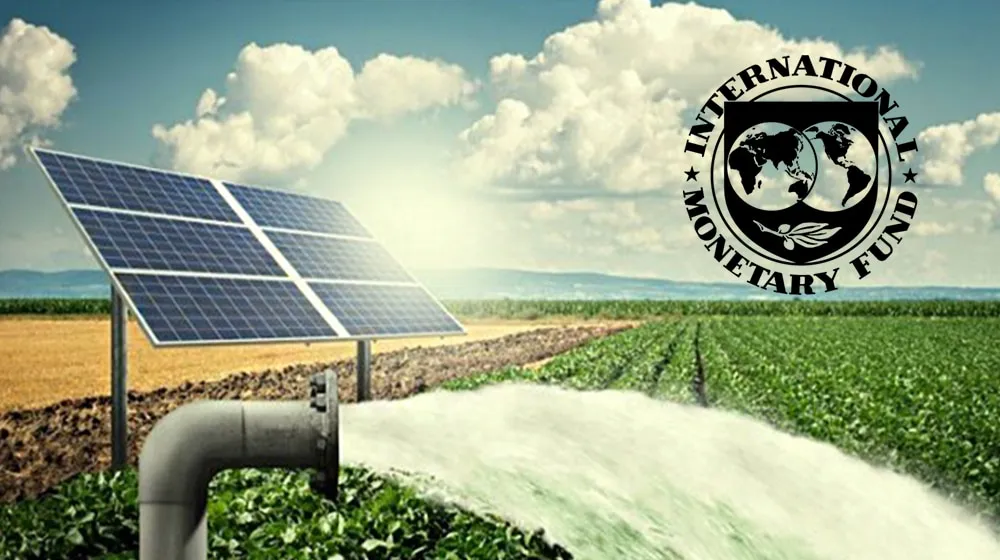Islamabad, April 11: The government under Prime Minister Shehbaz Sharif has entered into a series of fresh commitments with the International Monetary Fund (IMF), aiming to comprehensively reform Pakistan’s power and gas sectors.
These pledges include routine tariff hikes, transferring circular debt (CD) to the Central Power Purchasing Agency (CPPA-G), and a firm ban on the introduction of any new subsidies for electricity or gas.
This reform strategy was finalized during discussions with the IMF mission held from February 24 to March 14, 2025, and continued through virtual consultations.
According to Finance Ministry insiders, these fundamental reforms are the only path forward to reduce energy costs, enhance sustainability, and eventually lower electricity tariffs.
Pakistan’s revised energy plan aims to freeze the expansion of circular debt while instituting systemic reforms that strike a balance between sectoral viability and safeguarding vulnerable consumer segments.
The reforms have shown better-than-expected outcomes in the first half of FY25, with gains of Rs450 billion attributed to lower financing costs and better revenue recovery.
Circular Debt
As of January 2025, the power sector’s circular debt stood at Rs2,444 billion (2.1% of GDP), while circular debt in the gas sector was recorded at Rs2,294 billion (2.2% of GDP) as of June 2024.
Authorities have committed to maintaining cost-reflective energy pricing, mitigating fiscal vulnerabilities, ensuring debt sustainability, and promoting a business-friendly environment.
The objective is to eliminate net circular debt flow by FY25 and sustain the achievement into FY26 through tariff rationalization, targeted assistance, and ongoing structural reform.
The government’s Circular Debt Management Plan (CDMP) shared with the IMF includes the assurance of timely power tariff revisions aligned with cost recovery requirements.
NEPRA will continue its automatic implementation of quarterly tariff adjustments (QTAs) and monthly fuel cost adjustments (FCAs) to bridge any disparities between the base tariff and actual revenue needs during the year.
Read More: IMF Team to Start Visit from Tomorrow on Budget Preparations
The government will ensure full implementation of the July 2025 annual tariff rebasing, QTAs, and FCAs. All provincial governments have agreed not to offer any new electricity or gas subsidies.
On reducing circular debt, the government has pledged to convert existing CD into CPPA-managed debt.
The current power sector CD of Rs2.4 trillion will be reduced by the end of FY25 through multiple measures: Rs348 billion through IPP arrear renegotiation (with Rs127 billion allocated from budgeted subsidies and Rs221 billion from CPPA cash flow), Rs387 billion via interest waivers, and Rs254 billion from additional budgeted subsidies.
Non-interest-bearing liabilities
Non-interest-bearing liabilities of Rs224 billion will remain uncleared.
To address the residual Rs1.252 trillion, the government will borrow from banks to repay Power Holding Limited (PHL) loans amounting to Rs683 billion and clear remaining interest-bearing dues to power producers totaling Rs569 billion.
This loan will be secured at a rate lower than what is currently paid on the CD stock and will be repaid over six years through a Debt Service Surcharge (DSS).
The DSS will initially be set at 10% of NEPRA’s determined revenue requirement, with annual adjustments during tariff rebasing.
If DSS revenues fall short, rates will be raised to meet obligations and anticipated future gaps.
Legislation will be introduced by June 2025 to remove the existing 10% cap on DSS. No government financing will be used to cover any shortfalls.
Read More: IMF Team to Start Visit from Tomorrow on Budget Preparations
The government will develop a structured plan to retire any interest-bearing CD stock anticipated at the end of FY25 (estimated at Rs337 billion) alongside the FY26 budget, without using subsidies. With interest payments—one of the primary drivers of CD accumulation—significantly curtailed, CD targets will be progressively reduced to zero by FY31.
In terms of budget allocations, the FY26 federal budget will feature reduced subsidies compared to FY25, reflecting the expected cost savings from structural reforms and CD stock clearance.
However, starting March 17, 2025, the government will introduce a limited-time subsidy funded by a Rs10 per litre Petroleum Development Levy (PDL). This measure, which will expire on June 30, 2026, is projected to generate Rs182 billion annually.
Captive Power Plant
This subsidy will benefit all non-lifeline consumer groups by cutting the average power tariff by Rs1.7 per unit. The government is also receiving revenue from the Captive Power Plant (CPP) transition levy, which will support further tariff reductions for all grid-connected users.
Initially, this is expected to yield a reduction of Rs0.90 per unit, with further decreases planned as the CPP levy continues to increase under existing legislation through 2026.
The total subsidy will be strictly capped at 0.8% of GDP and will be used to finance: (i) temporary tariff relief via PDL-generated funds; (ii) tariff differential costs; (iii) arrears payments for FATA and K-Electric; (iv) agricultural tube wells; and (v) operational costs to mitigate CD flow, anticipated to decline significantly post-CD conversion.
Also Read: IMF Delegation on Reforms, Corruption Arrives in Pakistan
Authorities have emphasized their commitment to accelerating reforms targeting underlying cost structures in the energy sector.
With support from the World Bank, the Asian Development Bank (ADB), and other development partners, the government is pressing forward with critical changes necessary to ensure long-term sectoral stability and fiscal discipline.
